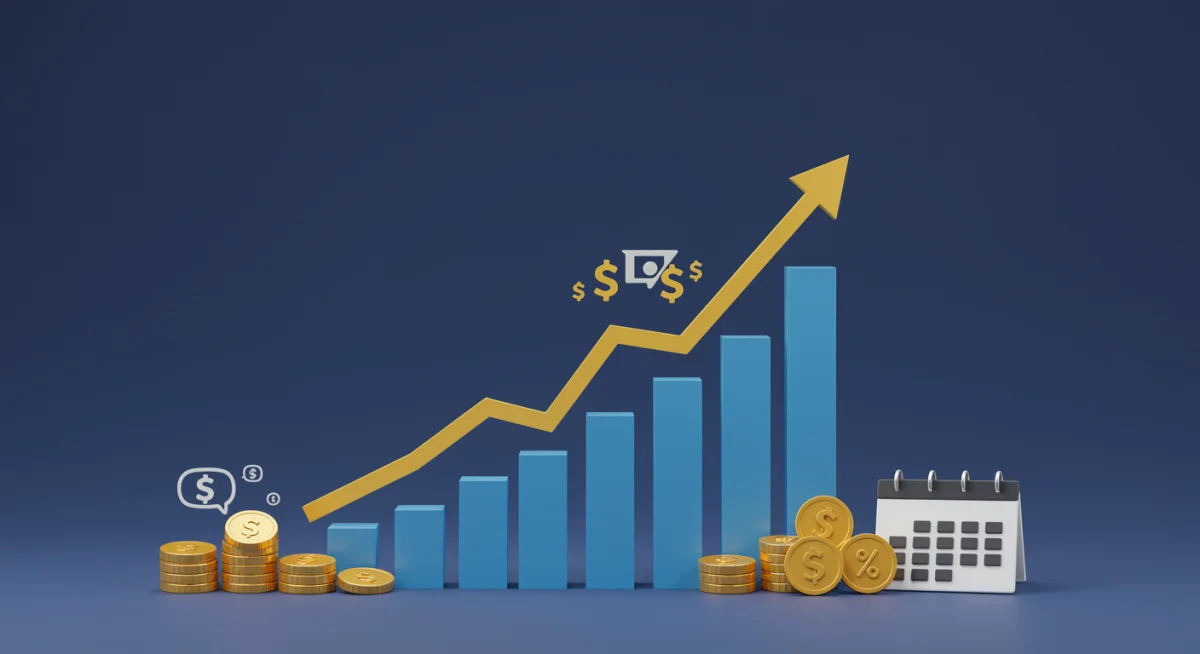Maximize Your 401(k) Matching in 2025: An Insider’s Guide

Anúncios
Understanding and optimizing your 401(k) matching in 2025 is crucial for maximizing retirement savings, as employer contributions significantly accelerate wealth accumulation, offering a direct path to enhanced financial security.
Are you ready to truly understand and capitalize on one of the most powerful tools available for your financial future? This guide, Maximize Your Retirement Savings: An Insider’s Guide to 401(k) Matching in 2025, delves deep into the intricacies of employer contributions, providing you with actionable insights to ensure you are not leaving free money on the table. It’s time to take control of your retirement trajectory.
Anúncios
Understanding the Fundamentals of 401(k) Matching
Before diving into strategies, it’s essential to grasp the core concept of 401(k) matching. This employer-sponsored benefit is a cornerstone of many retirement plans, designed to incentivize employees to save for their future. When an employer offers a 401(k) match, it means they contribute a certain amount to your retirement account based on your own contributions, essentially giving you ‘free money’ towards your nest egg.
The structure of these matching programs can vary significantly from one company to another. Some employers might offer a dollar-for-dollar match up to a certain percentage of your salary, while others might provide a 50-cent match for every dollar you contribute. Understanding your specific plan’s details is the first critical step in maximizing this benefit. Many employees overlook these details, potentially missing out on substantial contributions over their career.
Anúncios
Common 401(k) Matching Formulas
Employer match formulas are diverse, but they generally fall into a few common categories. Knowing which one applies to you helps in planning your contributions effectively.
- Dollar-for-Dollar Match: The employer contributes an equal amount to your contribution, up to a specified percentage of your salary. For example, a 100% match up to 3% means if you save 3% of your salary, your employer adds another 3%.
- Partial Match: The employer contributes a fraction of your contribution, up to a certain percentage. A common scenario is a 50% match on the first 6% of your salary, meaning for every dollar you put in, they add 50 cents, up to 6% of your pay.
- Discretionary Match: Some employers offer a match that is not guaranteed and can change year to year based on company performance. This type requires careful monitoring.
Each formula has its nuances, impacting how much you need to contribute to receive the full employer match. Neglecting to contribute at least enough to get the full match is often cited as a major financial mistake. This foundational understanding sets the stage for more advanced strategies.
Key Changes and Considerations for 401(k) Matching in 2025
The financial landscape is ever-evolving, and 2025 brings its own set of rules and considerations for 401(k) matching. Staying informed about these changes is paramount to optimizing your retirement strategy. While specific legislative adjustments for 2025 are subject to ongoing developments, general trends indicate a continued emphasis on employee savings and employer incentives.
One significant area to watch is the annual contribution limits set by the IRS. These limits typically adjust for inflation, impacting how much you can contribute to your 401(k) on a pre-tax or Roth basis. An increase in these limits means more opportunity to save, and potentially, more opportunity to receive a larger employer match if your plan is structured accordingly. Keeping an eye on these figures as they are announced will be vital for planning your contributions.
Impact of Economic Trends on Employer Contributions
Economic conditions can also influence employer matching policies. In robust economic periods, companies might be more generous with their match programs as a way to attract and retain talent. Conversely, economic downturns could lead some companies to temporarily reduce or suspend their match to cut costs. Understanding the broader economic outlook can help you anticipate potential changes and adjust your saving strategy proactively.
- Inflation Adjustments: Annual IRS contribution limits for 401(k)s often increase with inflation, allowing higher personal contributions.
- Company Performance: Employer match percentages can be tied to company profitability, especially in discretionary match plans.
- Labor Market Dynamics: A competitive job market might encourage employers to offer more attractive 401(k) matching to draw in skilled workers.
Beyond federal regulations, individual company policies can also shift. Employers might review their benefits packages annually, adjusting their 401(k) match to align with budget constraints, recruitment goals, or employee feedback. It’s always a good practice to review your plan documents and communicate with your HR department or plan administrator for the most current information regarding your employer’s 401(k) match for 2025.
Strategies to Maximize Your Employer Match
Once you understand the fundamentals and potential changes, the next step is to implement effective strategies to ensure you are capturing every possible dollar from your employer’s 401(k) match. This isn’t just about saving; it’s about smart saving.
The most straightforward strategy is to always contribute at least enough to receive the full employer match. This is often referred to as ‘not leaving free money on the table.’ If your employer matches 100% of your contributions up to 5% of your salary, ensure you are contributing at least that 5%. Failing to do so means you are voluntarily foregoing a guaranteed return on your investment, which is a rare opportunity in financial markets.
Understanding Vesting Schedules
Another crucial aspect of maximizing your match is understanding your plan’s vesting schedule. A vesting schedule dictates when employer contributions become fully yours. If you leave the company before you are fully vested, you might forfeit a portion or all of your employer’s contributions. Vesting schedules typically fall into two categories:
- Cliff Vesting: You become 100% vested after a specific period, usually 1 to 3 years. If you leave before this period, you get nothing from the employer match.
- Graded Vesting: You become partially vested each year, gradually increasing to 100% over a few years (e.g., 20% after 1 year, 40% after 2 years, etc.).
Knowing your vesting schedule helps you make informed decisions about job changes and long-term financial planning. If you are close to becoming fully vested, it might be financially advantageous to stay with your current employer a little longer. Conversely, if you’re early in your career and likely to change jobs frequently, understanding graded vesting can help you manage expectations about your accumulated employer match.
Beyond simply meeting the match, consider increasing your contributions beyond the match threshold if your financial situation allows. While the match is ‘free money,’ contributing more can significantly accelerate your retirement savings, especially when combined with the power of compounding. Regularly reviewing and adjusting your contribution percentage is a smart move for long-term financial health.
The Power of Compounding and Early Contributions
The concept of compounding interest is arguably the most powerful force in wealth creation, particularly when it comes to retirement savings. When you combine consistent contributions with employer matching, and allow that money to grow over decades, the results can be truly astonishing. Starting early amplifies this effect exponentially, making every dollar contributed in your younger years worth significantly more in retirement.
Compounding means that your investments earn returns, and then those returns themselves start earning returns. It’s a snowball effect. With a 401(k) and employer match, you’re essentially getting a head start on this snowball. The matched funds immediately increase your principal, giving more money to grow from day one. This makes early contributions incredibly valuable, as they have the longest time horizon to benefit from compounding.

Illustrating Compounding’s Impact
Consider two individuals: one starts saving $200 per month at age 25, while the other starts saving $400 per month at age 35. Assuming the same rate of return, the individual who started earlier, even with lower initial contributions, will likely have significantly more money by retirement age due to the extra decade of compounding. When you factor in employer matching, the disparity becomes even greater.
- Time is Your Ally: The longer your money is invested, the more time it has to compound and grow.
- Employer Match Multiplier: Employer contributions immediately boost your principal, supercharging the compounding effect.
- Consistency is Key: Regular contributions, even small ones, over time yield substantial results.
Don’t underestimate the impact of even small, consistent contributions, especially when coupled with your employer’s match. Every year you delay contributing, you lose not only your potential personal contributions but also the associated employer match and decades of compounding growth on those funds. Make it a priority to contribute as much as possible, as early as possible, to fully harness this financial superpower.
Navigating Contribution Limits and Catch-Up Contributions
As you plan to maximize your 401(k) matching, it’s crucial to be aware of the IRS-imposed contribution limits. These limits define the maximum amount you can contribute to your 401(k) each year, and they are subject to change annually. For 2025, these figures will be announced, and it’s essential to stay updated to ensure compliance while optimizing your savings.
The general contribution limit applies to employee contributions, whether pre-tax or Roth. This limit does not typically include employer contributions; your employer’s match is separate from your personal contribution limit. However, there’s an overall limit to the sum of employee and employer contributions, often much higher than the individual limit. Most employees won’t hit this overall limit, but it’s good to be aware of its existence.
Catch-Up Contributions for Older Workers
For those nearing retirement, the IRS offers a valuable benefit: catch-up contributions. If you are age 50 or older, you are allowed to contribute an additional amount to your 401(k) each year above the standard limit. This provision is designed to help older workers boost their retirement savings if they started late or simply want to accelerate their accumulation in their later career years.
- Standard Contribution Limit: The maximum amount an employee can contribute to their 401(k) annually (adjusts for inflation).
- Catch-Up Contribution Limit: An additional amount permitted for those aged 50 and over to contribute to their 401(k).
- Total Plan Limit: The combined maximum of employee and employer contributions allowed in a 401(k) plan.
Leveraging catch-up contributions, especially when combined with an employer match, can significantly impact your retirement readiness. If your employer continues to offer a match on these additional contributions (which some plans do), it provides an even greater incentive to save more. Always confirm with your plan administrator if catch-up contributions are eligible for employer matching in your specific plan. Planning your contributions to hit these limits, particularly the catch-up contributions if applicable, is a sophisticated strategy for maximizing your retirement nest egg.
Beyond the Match: Holistic Retirement Planning
While maximizing your 401(k) matching is a critical component of retirement planning, it’s important to view it as part of a larger, holistic strategy. Your 401(k) is a powerful tool, but it’s rarely the only one you should be utilizing. A comprehensive approach ensures all aspects of your financial life are working in concert towards a secure retirement.
Consider diversifying your retirement savings across different account types. This might include Roth IRAs, traditional IRAs, or even taxable brokerage accounts, depending on your income level and financial goals. Each account type offers distinct tax advantages and flexibility, and strategically combining them can provide a more robust and adaptable retirement portfolio. For instance, a Roth IRA offers tax-free withdrawals in retirement, complementing the tax-deferred growth of a traditional 401(k).
Other Important Retirement Planning Elements
Retirement planning extends beyond just contributions and matches. It involves careful consideration of investment choices, risk tolerance, and long-term financial projections. Regularly reviewing your investment portfolio within your 401(k) and other accounts is essential to ensure it remains aligned with your goals and risk appetite. Market conditions change, and so should your investment strategy over time.
- Diversification: Spread investments across various asset classes and account types (e.g., IRAs, taxable accounts) to manage risk.
- Investment Strategy: Regularly review and adjust your portfolio based on market conditions, risk tolerance, and time horizon.
- Estate Planning: Consider beneficiaries and wills to ensure your assets are distributed according to your wishes.
- Healthcare Costs: Factor in potential future healthcare expenses, which can be a significant cost in retirement.
Furthermore, don’t overlook the importance of budgeting, debt management, and emergency savings. A solid financial foundation in these areas provides the stability needed to consistently contribute to your retirement accounts. Consulting with a financial advisor can also provide personalized guidance, helping you navigate complex decisions and build a retirement plan tailored to your unique circumstances and aspirations. Maximizing your 401(k) match is a fantastic start, but it’s one piece of a much larger, more intricate puzzle.
| Key Point | Brief Description |
|---|---|
| Maximize Match | Always contribute at least enough to receive your full employer 401(k) match. |
| Understand Vesting | Know your vesting schedule to ensure employer contributions become fully yours. |
| Leverage Compounding | Start saving early to harness the exponential growth of compounding interest. |
| Stay Informed | Monitor 2025 contribution limits and any changes to employer match policies. |
Frequently Asked Questions About 401(k) Matching
401(k) matching is when your employer contributes money to your retirement account based on your own contributions. It’s crucial because it’s essentially free money that significantly boosts your savings, accelerating your path to retirement security and increasing your overall net worth over time.
You can typically find this information in your company’s benefits package documents, employee handbook, or by contacting your Human Resources department. Your 401(k) plan administrator’s website or customer service line is also an excellent resource for personalized details regarding your specific plan.
If you don’t contribute at least the percentage required to get the full employer match, you are leaving free money on the table. This means you’re missing out on a guaranteed return on your investment, which can amount to thousands of dollars in lost retirement savings over your career.
Not always. Employer contributions are subject to a vesting schedule, which dictates when they become fully yours. If you leave the company before you are fully vested, you might forfeit some or all of the employer’s contributions. Always review your plan’s specific vesting rules.
Yes, you absolutely can and often should contribute more than the percentage required for the full employer match, up to the annual IRS contribution limits. Contributing more accelerates your retirement savings and further benefits from compounding interest over the long term.
Conclusion
Effectively navigating and maximizing your 401(k) matching in 2025 is a cornerstone of a robust retirement strategy. By understanding your plan’s specifics, staying informed about annual changes, and consistently contributing at least enough to receive the full employer match, you are taking a crucial step towards securing your financial future. Remember, the ‘free money’ from your employer, combined with the power of compounding and early contributions, can significantly amplify your savings over time. Don’t leave these invaluable benefits untapped; proactive engagement with your 401(k) is one of the smartest financial decisions you can make.





